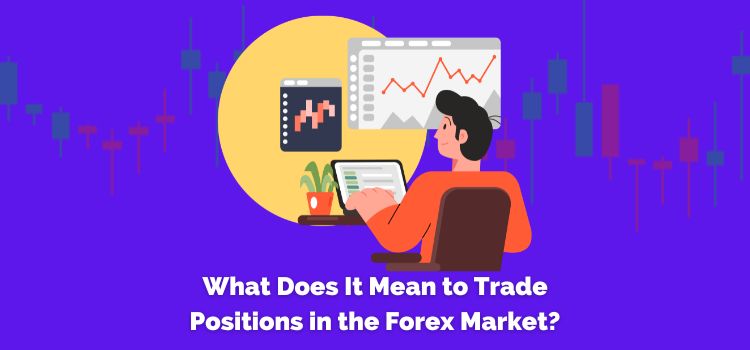Position trading in the forex market involves buying and selling currency pairs over time, lasting anywhere from several days to several weeks or months.
The goal of position trading is to capitalize on long-term trends in the foreign exchange markets by taking advantage of the potential for more significant gains over an extended period.

Position traders must be mindful of short-term and long-term price movements and risk management strategies such as stop losses and profit targets.
How to Trade Positions in the Forex Market?
Knowing how to trade positions in the forex market is essential to ensure success. FX traders should learn to trade positions in forex before putting their money on the line.
➥ Research the market
To successfully trade positions in the forex market, traders must thoroughly understand how the currencies move and what economic factors could impact them. The best way to do this is by conducting extensive research on each currency pair you intend to trade to identify potential trends or trading opportunities.
➥ Set goals and risk tolerance
Before entering any position trades, an FX trader should set goals and determine their risk tolerance levels. This will provide an essential framework for deciding when and where to enter into trades and ensure that all decisions align with your desired returns and risk management strategy. In addition, traders should also set realistic expectations and be prepared for losses, as every strategy is flawed.
➥ Choose an appropriate trading strategy
FX traders must choose the right strategy based on their goals, experience level, risk tolerance, and market analysis. Some strategies include trend following, range trading, scalping, arbitrage, hedging, and more.
Each has unique advantages and disadvantages that traders must weigh before committing to any strategy. In addition, it is essential to remember that the best trading strategy constantly evolves and must be adapted as market conditions change.
➥ Enter into trades
Once a trader has identified an entry point for a position trade according to their chosen strategy, they should consider their desired exit points to maximize their advantages or minimize losses. It could involve setting stop-loss limits or take-profit targets depending on the individual’s risk appetite. In addition, traders should remember to keep their trading psychology in check and avoid emotional or impulsive decisions.
➥ Monitor your trades
Position traders must remember to monitor their open positions throughout the trade. It allows them to make timely adjustments and take advantage of opportunities for improved risk management or profit potential.
Position traders should also be aware of any economic news impacting their trades and be prepared to adjust if required. In addition, traders should also consider incorporating technical analysis to identify any potential entry or exit points.
Advantages of Trading Positions in Forex
Position trading can offer many advantages over other strategies, such as scalping or day trading. Traders should be aware of these to ensure they choose the most suitable strategy for their goals.
➥ Lower risk
Position trading allows traders to spread their risk over a more extended period, meaning they are less likely to be impacted by short-term volatility that could otherwise disrupt their trades. As such, position traders can often maintain less capital in the markets at any given time than those who use shorter-term strategies.
➥ Low fees and commissions
Position traders also benefit from lower fees and commissions as fewer transactions occur than a day or swing trading. It can save money for both financial institutions and individual traders alike.
➥ Capital appreciation
Position trades often lead to greater capital appreciation as the trader benefits from long-term trends or movements in the underlying instrument. It is particularly beneficial for those seeking higher returns compared to short-term strategies.
➥ Improved capital preservation
Position trading can often lead to improved capital preservation as losses are gradually taken over an extended period. It makes it easier for traders to manage their risk and ensures they don’t suffer significant losses in one go.
➥ Reduced stress
Position trading can be less stressful than other strategies as there is less of a need to monitor the markets continuously. It makes it easier for traders to focus on their other tasks or obligations without worrying about their trades too much.